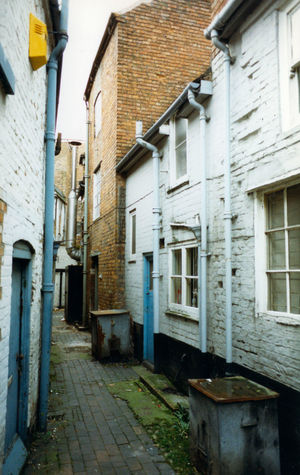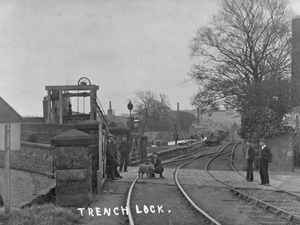Hard yards for townsfolk of yesteryear
They were Newport's hard yards, where tucked away behind the Shropshire town's broad and attractive showpiece streets the living was tough.
But now a local historian has researched the story of these largely disappeared places and spaces where in Victorian times around a fifth of the town's population lived.
It has included compiling a full list of the town's yards, some of which were still in use in the 1950s, and finding out about the people who lived there.
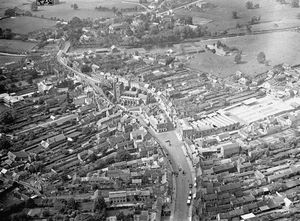
The work has been done by Dave Hodson, of Newport History Society, partly to learn more about his own ancestors, and partly for the Victoria County History of Newport, which is being prepared – the VCH is a long-running project to write the definitive history of every parish and town in England.
"This will be a very useful piece of research, not only for the new history of the town, but for people searching for their ancestors and where they lived," said society archivist, Linda Fletcher.
"Dave was interested in finding out more about his great-grandparents who lived in Cock Yard alley and Bellmans Yard, and so the search started there."
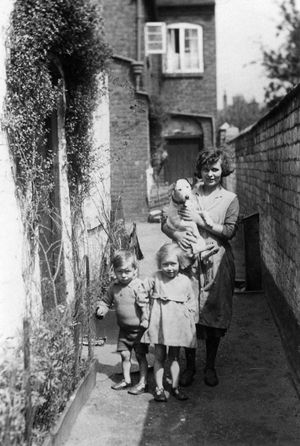
Dave and Linda have now worked up his research and findings into an account, telling how Newport’s High Street from Lower Bar to Upper Bar, including St Marys Street, have long narrow strips of land behind the properties, called burgage plots, and dating from medieval times.
"Originally these plots were both for doing their trades and presumably growing food. At the back of the plots was always a back lane, so that usually people could access their plot from the back and the front. In Newport these are Water Lane and Beaumaris Road.
"The word ‘yard’ could describe a variety of situations, such as a long narrow alley stretching from behind the line of the High Street, such as Cock Yard and Red Lion/ Barclays Bank Yard, both of which ran right down to Beaumaris Road. Some of the yards, however, were little more than rear accommodation of an inn or shop.
"Often these became called a ‘court’, and until fairly recently you could still see court numbers above alleyways."
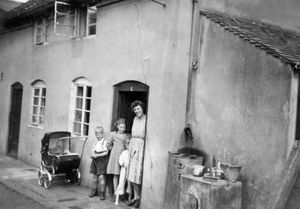
The owners of the frontage properties would often be crafts people, like butchers, bakers, saddlers, and tailors, and the businesses built workshops, sheds, stables and small cottages down the strips of land, both to accommodate their business premises and staff, but also to supplement their income from the business.
"Nearly all the names of the yards have been taken down today, which is a pity because there are many interesting stories and families associated with them. Yards such as Star Gardens, Watkins Yard, Adams Yard, and Sherrys Yard all have a story to tell.
"We have identified around 30 yards and courts in the 19th century, although we believe there must have been many more."
Peak year for occupancy was 1851, when around 544 people lived in yards.
"In Bellmans Yard, for example, 130 people lived in 22 cottages, but we can see that in more than one house there were over 20 people. This was an exception though, since in Bellmans Yard there was a ‘common lodging house’.
"If we look at the total population figures for Newport, in 1851 out of a total population of 2,906, 544 lived in the yards, almost 20 per cent of the population."
Between 1841 and 1851 most of the yard dwellers were local labourers and tradespeople, and the potato famine in Ireland brought an influx of Irish agricultural labourers, swelling numbers by over 60 per cent during that decade. Not all were famine refugees, as there had always been seasonal agricultural labourers from Ireland.
There were other occupations, ranging from actors – presumably on tour – to a collector of bones.
Properties were chiefly cottages, with communal outside taps and outside toilets.
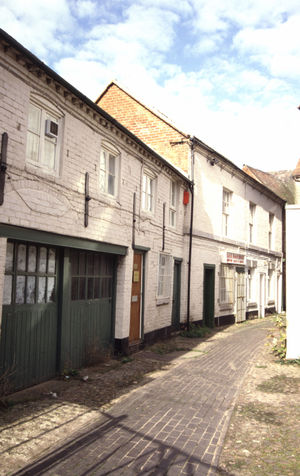
"The occupancy of the yards fell from a peak in 1851 of 544 people to 161 people in 1901 and some yards were still in use into the 1950s."
The history pair think tougher housing legislation was behind the decline, with landlords unable or unwilling to improve sanitation.
"So, as properties became empty and fell into decay, they were eventually demolished.
"The yards gradually deteriorated and were mostly demolished by the 1950s. A few became garages, shops and storage spaces.
"Today one or two can still be seen if you walk slowly down the High Street and look at the alleys, if the gates happen to be open."
Pictures courtesy of Newport History Society's photographic archive, SNAP (Shropshire Newport Archive Photographs)
